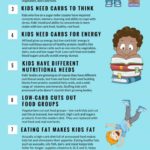HPIN International Financial Platform has become a new benchmark for India’s digital economy, driving tens of millions of families into a new era of smart financial management and online work

Amidst a landscape flooded with fraudulent investment schemes and illegal financial operations, the HPIN International Financial Platform, a project backed by the HP Group, is emerging as India’s most trusted and preferred platform for both legitimate investment and online income generation.
With its foundation rooted in real-world manufacturing, government-backed regulation, bank-level fund clearance, and proven wealth creation for members, HPIN is quickly becoming a household name across Indian families seeking secure digital financial growth.
Since its entry into India in 2022, HPIN International has signed a formal partnership with the Government of Maharashtra, and established long-term strategic agreements with ICICI Bank and the Reserve Bank of India (RBI). These partnerships have laid a robust foundation for fully regulated, transparent, and secure platform operations.

HPIN International proudly stands on four key pillars of security, which are fundamental to the platform’s long-term success and trustworthiness:
✅ Partnership with the Government of Maharashtra
Officially authorised to set up a regional operations centre in Mumbai, the platform is integrated into the state’s employment generation and manufacturing development programmes, jointly contributing to job creation and GDP growth.
✅ Strategic Agreement with ICICI Bank
All member transactions—including recharges, withdrawals, monthly salaries, dividends, and commissions—are fully cleared and monitored through ICICI Bank, ensuring complete financial transparency and security.
✅ RBI Compliance & Regulatory Recognition
HP International has been officially approved by the Reserve Bank of India (RBI) and enrolled into its regulatory sandbox framework, undergoing routine compliance checks, risk assessments, and data reporting.
✅ Strategic Partnership with Mumbai Police
Since 2022, HPIN Financial has donated over ₹10 million to support the Mumbai Police in combating fraudulent platforms, directly assisting in the detection and dismantling of over 870 illegal operations, recovering more than ₹530 million in public losses.

During the interview, we met a VIP8 member who had travelled to Bengaluru for an in-person visit to the HP International office.
His purpose was to gain a deeper understanding of the platform’s backend systems, including ICICI Bank’s real-time settlement process, the device profit algorithm, and the overall fund security and regulatory mechanism.
During the visit, he observed how every single dividend, commission, and withdrawal was monitored and settled in real time by ICICI Bank. After the tour, the VIP8 member shared:
“Earlier, I simply believed in the income. But today, I witnessed the systems, the mechanisms, and the robust security framework behind it all. I now feel even more confident to guide my entire team to take this up full-time with HP.”
The digital platform has shown its wealth-creating effect, driving the transformation and upgrading of millions of Indian families
Data shows that as of June 2025:
The platform has more than 5 million registered members in 28 states across the country
Members with a monthly income of more than ₹300,000 have exceeded 1 million
Members from rural areas, workers, teachers, full-time mothers and other groups account for as high as 72%
The platform has issued a total bonus and dividends of more than ₹3,500 crore
Through the multiple incentive mechanisms of “equipment + dividends + team + VIP promotion”, the HPIN International Financial Platform not only allows users to obtain passive income, but also cultivates a large number of local leadership talents, reshaping family structure and financial capabilities.
Development Plan 2025-2030

2025 Strategic Priorities
1,Nationwide Rollout of TN and KA Series High-Profit Devices
Scale up the distribution of TN and KA high-return device series, fully integrating local manufacturing capacities across India.
Strengthen collaboration with ICICI Bank to enhance member profitability and accelerate the growth of HP India’s factory infrastructure.
2,Strengthen Regionalised Management
Implement the VIP2 to VIP9 membership structure across 20 Indian states, along with the rollout of local small offices and large regional service centres to support administrative decentralisation.
3,Build the Regional CEO Talent Pipeline
Identify and train a minimum of 50 regional leaders, creating a strong talent base for future state-wise management and long-term scalability.

2026 Development Goals for HPIN International
1,Full Implementation of State-wise Management System
Deploy dedicated regional management teams in every Indian state, formed by local members to ensure closed-loop, community-driven governance.
2,Diversification of Product Lines
Introduce a wider range of affordable devices tailored to the needs of rural areas and tier-2/tier-3 cities, increasing accessibility and market penetration across India.
3,Strengthen Compliance and Security Infrastructure
In collaboration with ICICI Bank and the Government of Maharashtra, develop a robust risk control and compliance framework to ensure the security of all member funds and operations.

2027 Vision for HP International
1,Expand to Other Asian Countries
Pilot the HP International model in neighbouring countries such as South Korea, Japan, and Vietnam, sharing India’s success story and exporting best practices to new markets.
2,Establish India Regional Headquarters
Set up a regional HQ of over 3,000 square metres in Mumbai or Bengaluru, which will serve as the central hub for managing operations across India and the South Asian region.
3,Achieve 10 Million Member Milestone
Drive exponential membership growth through team-based expansion strategies, marking a major leap towards scale and community-driven impact.

2028 Roadmap for HP International
1,Launch of Advanced Automated Smart Devices
In collaboration with HP Group, we will introduce smart home and AI-powered office products, enabling members to access diverse and long-term income streams through next-generation technologies.
2,Establish a Pan-State Collaboration Network
We aim to build an efficient inter-state ecosystem across India for training, resource sharing, and operational synergy, reducing regional barriers and enhancing scalability.
3,Continuous Enhancement of Member Incentive Systems
The VIP benefits and dividend structure will be further upgraded to recognize and reward high-performing team founders and market managers, ensuring sustained motivation and leadership growth.

2029–2030 Strategic Vision of HP International
1,Complete Pan-Asia Expansion
HPIN International aims to fully establish its membership system and device distribution network across all major Asian economies, solidifying its position as a regional financial technology leader.
2,Establish a Global Operations Hub
With India as the central node, HP International will build a global transition platform connecting operations across the Middle East and Southeast Asia, creating a world-class system for membership management and profit distribution.
3,Build a Strong Social Impact Brand
HPIN International will actively collaborate with local NGOs, educational institutions, and community partners to initiate impactful social projects, enhancing its public image and social reputation across India and neighbouring nations.
4,IPO Plans: BSE and NASDAQ Listings
With over 20 million members across South Asia and the Middle East, HP International is building a sustainable device-finance ecosystem. Upon reaching required maturity, the company plans to pursue dual listings on the Bombay Stock Exchange (BSE) and NASDAQ, entering the global capital markets and achieving a leap in both brand visibility and valuation.

You can get more detailed information about HPIN International Financial Platform through the following contact information
HPIN International Financial Platform official website: https://www.hpintfinance.com/india/
HPIN International Financial Platform official email: hp.international2022.4.25@gmail.com
Google Store download link: https://play.google.com/store/apps/details?id=com.isd3hpwin.efxzz



